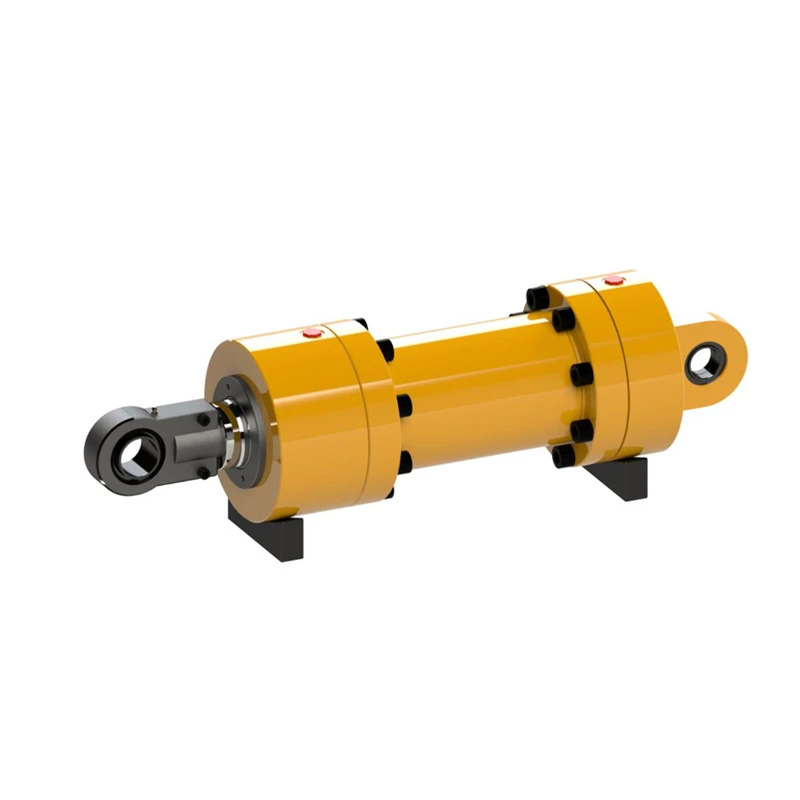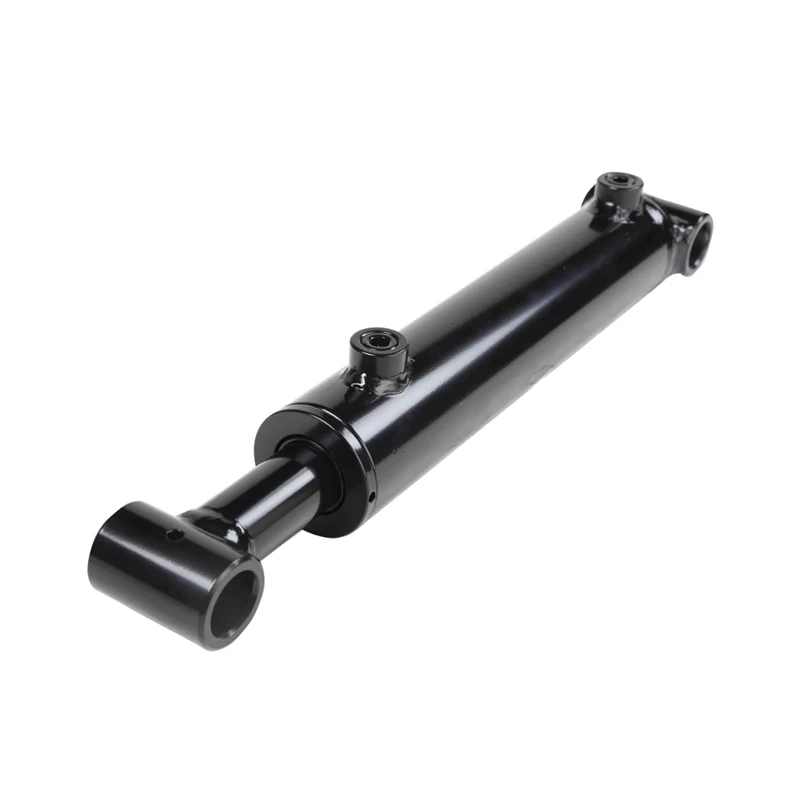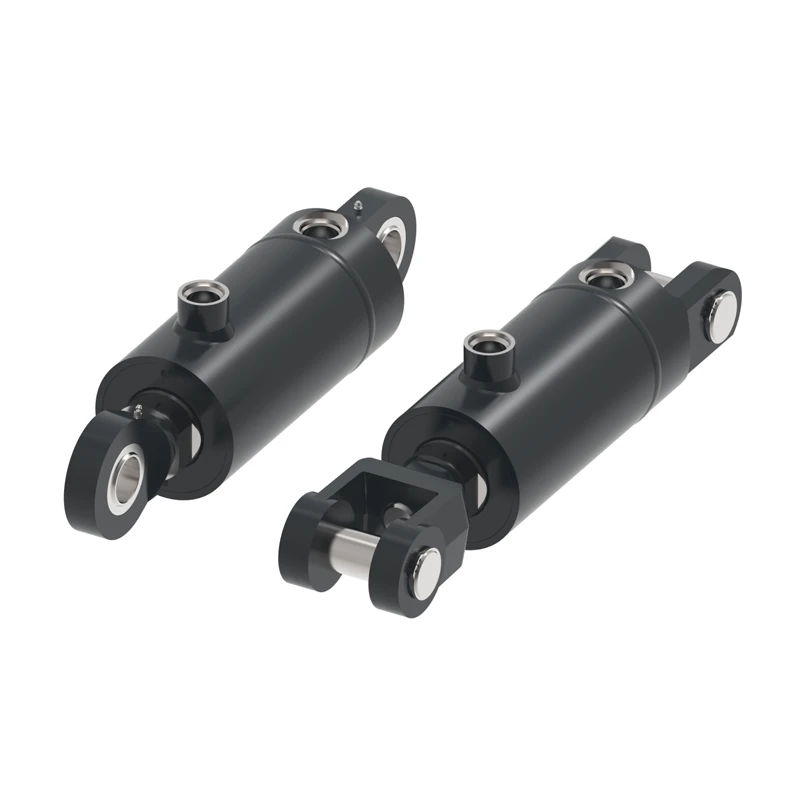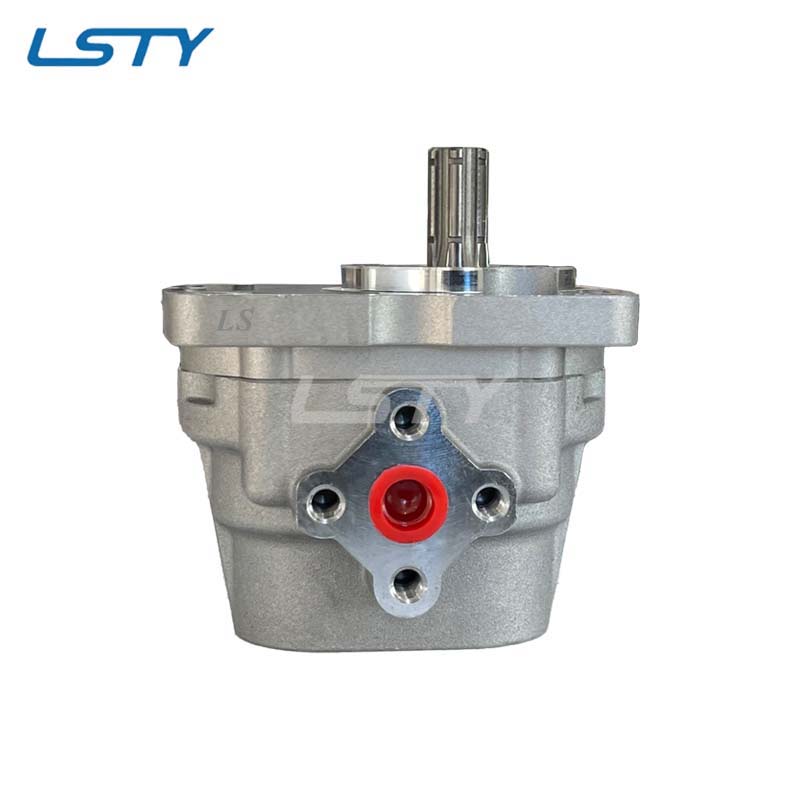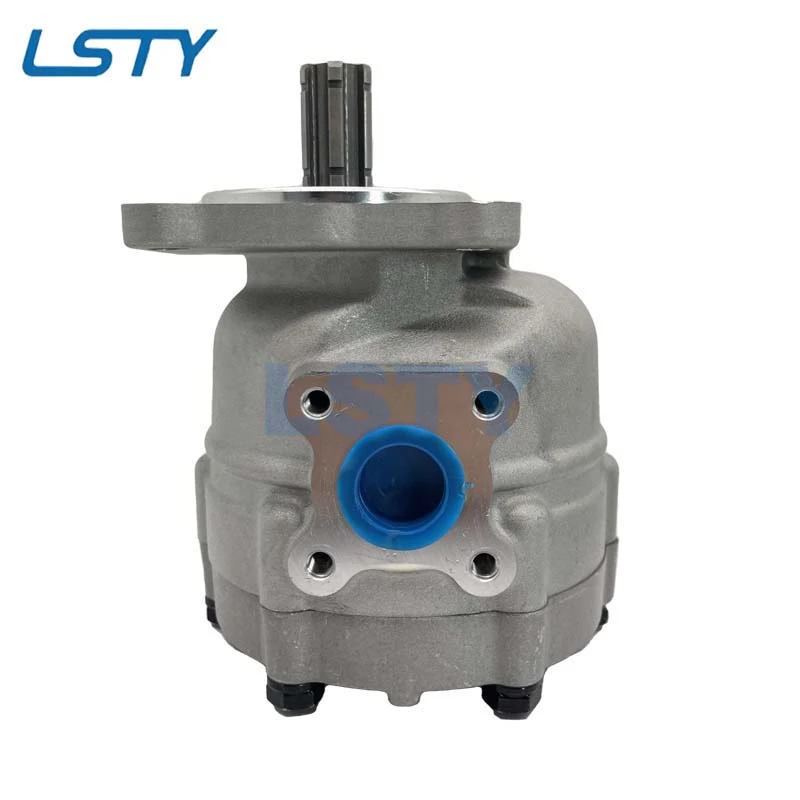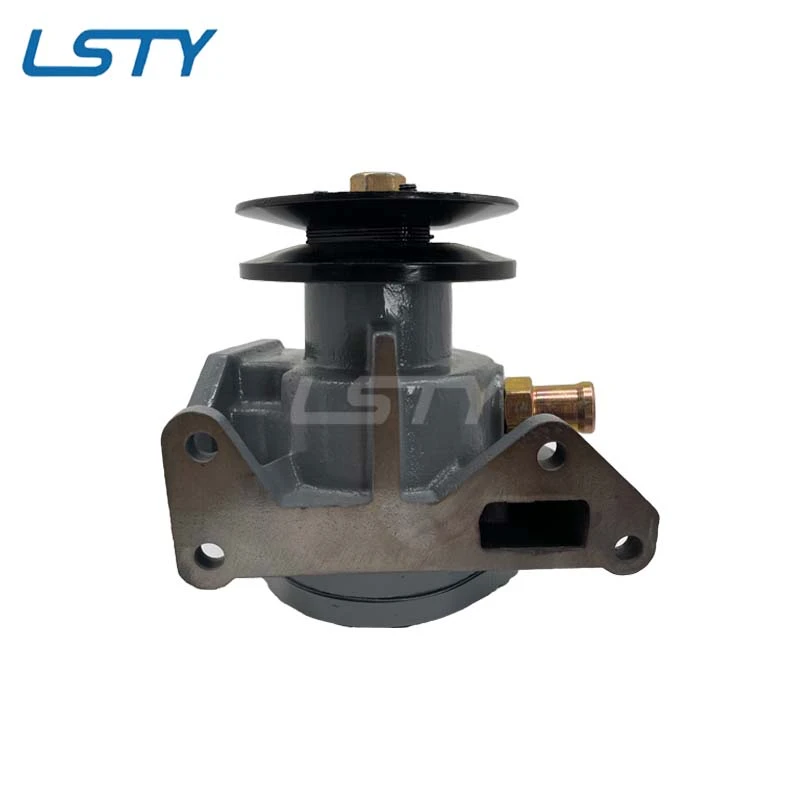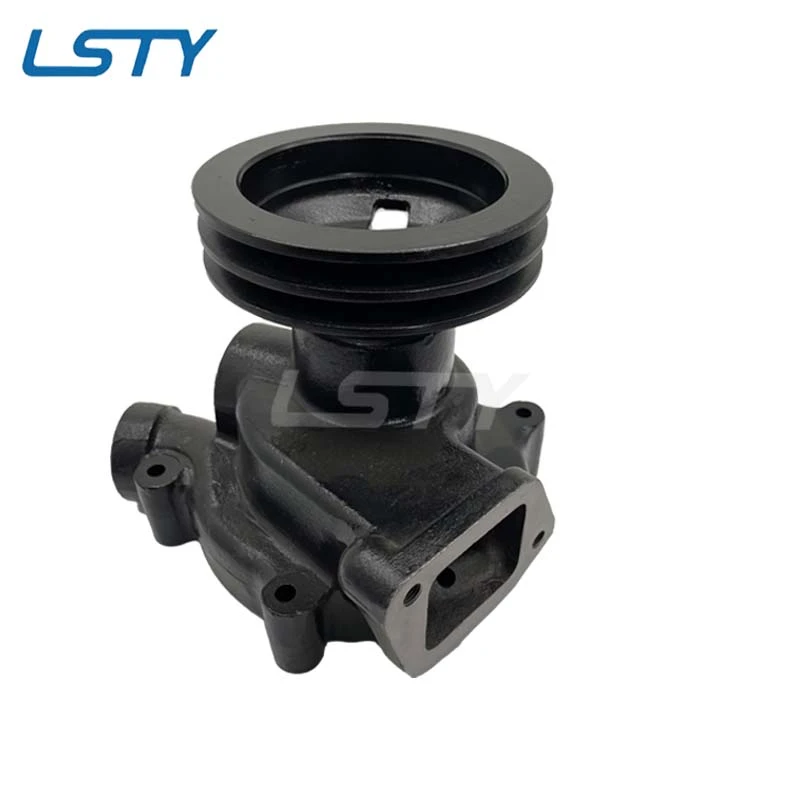Cavitation – the mere mention of the word sends shivers down the spine of hydraulic system operators. This destructive phenomenon, characterized by the formation and violent collapse of vapor bubbles within the hydraulic fluid, is a primary enemy of pump longevity and system efficiency. For critical components like hydraulic gear pumps, power gear hydraulic pumps, and sophisticated tandem hydraulic pump configurations, understanding and preventing cavitation isn't just best practice; it's essential for operational reliability and cost control. Ignoring it leads to pitted surfaces, excessive noise, reduced flow, catastrophic failure, and costly downtime.
HEBEI LONGSHENGTENGYU PUMP INDUSTRY CO., LTD (LSTY), a leading industrial pump manufacturer founded in 2000, has dedicated over 21 years to engineering robust fluid power solutions. Driven by the core principles of "LSTY means power products, ensured quality, efficient service," we integrate R&D, manufacturing, supply chain management, and customer service into a seamless operation. Our four powerful centers – Marketing, Supply Chain Management, Manufacturing, and Integration – work in unison towards a singular goal: offering superior products and service. Specializing in Engine cooling water pumps, Gear pump systems (including hydraulic gear pumps, power gear hydraulic pumps, and tandem hydraulic pump units), Valves, Cylinders, and custom fittings, LSTY products are manufactured to stringent specifications and global industry standards. Backed by a strong technical team and skilled sales force, our solutions are trusted across Russia, Belarus, the Czech Republic, the Middle East, and beyond. We fight to make value-added solutions for our customers, considering their needs and interests as our own. Continuous improvement in quality and service, coupled with competitive pricing and fast delivery, defines our commitment. We look forward to partnering with you globally to create lasting value. Now, let's delve into the critical issue of cavitation within gear pumps.
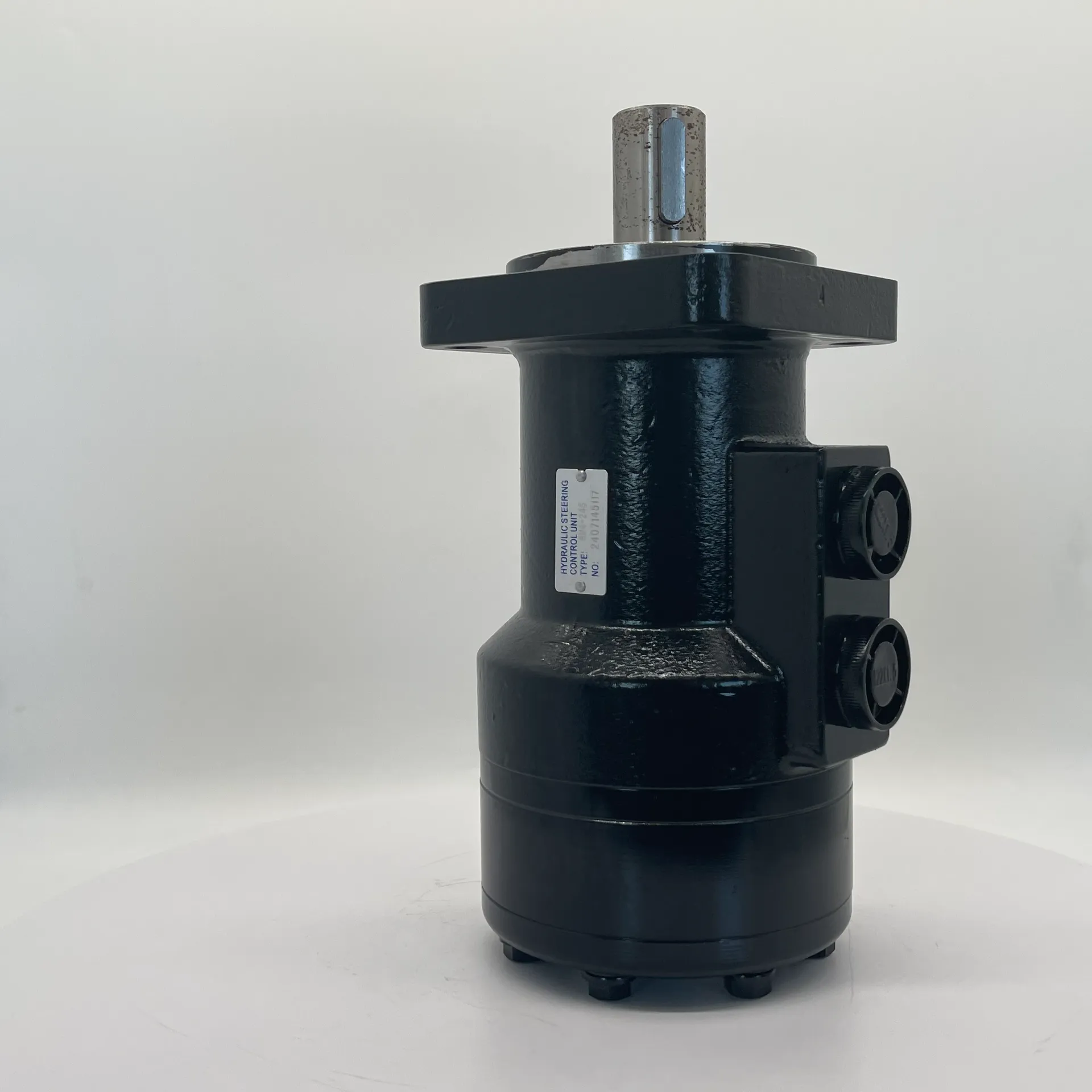
Understanding Cavitation in Hydraulic Gear Pumps
Cavitation occurs when the pressure within the hydraulic gear pump's inlet drops below the vapor pressure of the fluid. This pressure drop causes tiny vapor bubbles to form within the fluid. As these bubbles travel into the high-pressure discharge zone of the pump, they implode violently. The energy released during these implosions is immense, focused on tiny points on the pump's internal metal surfaces – primarily the gears and casing. Imagine thousands of microscopic hammers striking the metal relentlessly. Over time, this relentless assault leads to material fatigue and erosion, creating the characteristic pitting seen on cavitation-damaged components.
The causes of this damaging low pressure at the inlet of a hydraulic gear pump are varied but often stem from system design or operational issues:
Insufficient Inlet Pressure (NPSH Issues): The Net Positive Suction Head Available (NPSHA) must exceed the Net Positive Suction Head Required (NPSHR) by the pump. If the fluid pressure at the pump inlet is too low (low NPSHA), vapor bubbles form. This is the most common cause.
Restricted Inlet Lines: Clogged suction strainers, undersized inlet hoses or pipes, excessive bends, or kinks create flow resistance, reducing the pressure reaching the pump inlet.
High Fluid Viscosity or Temperature: Cold, thick fluid is harder to draw into the pump, reducing inlet pressure. Conversely, hot fluid has a lower vapor pressure, making it easier to vaporize under the same pressure conditions. Both scenarios increase cavitation risk.
Excessive Pump Speed (RPM): Running a hydraulic gear pump faster than its design specification increases the fluid velocity at the inlet. Higher velocity translates to lower pressure (Bernoulli's principle), potentially dropping below the fluid's vapor pressure.
Elevated Pump Mounting: If the pump is mounted significantly higher than the reservoir fluid level, gravity works against the fluid flow, reducing the pressure head available at the inlet.
Aeration: While distinct from pure cavitation, entrained air in the fluid can also cause noise and damage similar to cavitation. Air bubbles compress and expand rather than implode violently, but the effect on performance and component wear is still detrimental. Air ingress can occur through leaks in the suction line, low reservoir levels, or turbulent fluid return.
The consequences for the hydraulic gear pump are severe: rapid wear of gear teeth and housing, increased internal clearances leading to loss of flow and pressure, loud knocking or rattling noises, excessive vibration, fluid overheating, and ultimately, complete pump failure. For operations relying on consistent hydraulic power, this translates directly into unplanned downtime and significant repair or replacement costs.
Preventing Cavitation in Power Gear Hydraulic Pumps
Preventing cavitation in robust power gear hydraulic pump units requires a holistic approach focusing on system design, component selection, and diligent maintenance. LSTY engineers its power gear hydraulic pump solutions with cavitation resistance as a core design principle, but system integration is paramount. Here are key prevention strategies:
Optimize Inlet Line Design:
Adequate Sizing: Ensure inlet lines (hose or pipe) are generously sized to minimize flow resistance and pressure drop. Use smooth-bore hose specifically designed for suction applications.
Minimize Restrictions: Use full-flow strainers (correctly sized and maintained) and avoid unnecessary bends, elbows, or valves in the suction line. Keep the line as short and straight as possible.
Proper Reservoir Design: Position the pump below the reservoir fluid level whenever possible to utilize a positive head. Ensure the reservoir is adequately sized to prevent vortexing and air entrainment near the suction port. Baffles can help manage fluid flow within the reservoir. Maintain proper fluid levels at all times.
Ensure Sufficient NPSH Margin: Carefully calculate the NPSHA for your system (considering fluid properties, reservoir head, line losses, etc.) and select a power gear hydraulic pump whose NPSHR is significantly lower than the NPSHA. LSTY provides detailed NPSHR curves for its pumps to facilitate this critical selection process. Always leave a safety margin.
Control Fluid Temperature and Viscosity:
Maintain fluid temperature within the optimal operating range using properly sized coolers. Avoid overheating caused by system inefficiencies or environmental factors.
Use hydraulic fluid with the viscosity grade recommended by the pump manufacturer for the operating temperature range. Consider pre-heating fluids in extremely cold start-up conditions.
Operate Within Design Parameters: Never exceed the maximum recommended speed (RPM) for the power gear hydraulic pump. Overspeeding drastically increases the risk of cavitation. Ensure the pump is driven correctly without slippage or overload.
Prevent Air Ingress:
Ensure all suction line connections are tight and leak-free.
Maintain reservoir fluid level above the minimum required to prevent vortexing and air draw into the suction line. Return lines should discharge below the fluid surface and away from the suction inlet.
Use de-aerating reservoir designs and ensure breathers are clean and functioning correctly.
Use high-quality fluid with good air release properties.
Utilize Supercharging (When Necessary): In demanding applications where NPSHA is inherently low, a supercharging pump (a small, low-pressure pump feeding the main pump's inlet) can boost inlet pressure above the vapor pressure, effectively eliminating cavitation risk for the primary power gear hydraulic pump.
LSTY's power gear hydraulic pump range incorporates features like optimized inlet port geometry, precisely controlled gear clearances, and robust materials to inherently withstand demanding conditions better and offer a wider operational envelope before cavitation occurs.
The Role of Tandem Hydraulic Pumps in Cavitation Prevention
A tandem hydraulic pump configuration offers a unique and often highly effective solution for managing flow and pressure demands while inherently mitigating cavitation risks, particularly in complex systems. A tandem hydraulic pump consists of two or more pump elements (often gear pumps) mounted on a single drive shaft within a common housing, sharing a common inlet port but having separate outlet ports.
Here’s how a tandem hydraulic pump contributes to cavitation prevention:
Reduced Individual Pump Flow Demand: Instead of using one massive pump to meet a high total flow requirement, a tandem hydraulic pump splits the total flow requirement between two or more smaller pump elements. Each individual element requires less flow through its inlet port compared to a single large pump meeting the same total flow. Lower flow velocity through the shared inlet port translates directly to lower pressure drop across the inlet line and port. This significantly increases the NPSHA margin for each pump element, dramatically reducing the risk of cavitation.
Optimized System Design Flexibility: By allowing different sections (elements) of the tandem hydraulic pump to supply different circuits (e.g., one for high-pressure/low-flow, another for low-pressure/high-flow), system designers can tailor the flow and pressure requirements more precisely. This prevents situations where a single pump is forced to operate inefficiently at extremes, which can exacerbate cavitation tendencies. Circuits with inherently high flow demands can be supplied by an element specifically sized for that flow, benefiting from the lower inlet velocity.
Shared Inlet Optimization: Designing an efficient, low-restriction inlet path is critical but challenging, especially for large single pumps. A tandem hydraulic pump's shared inlet allows designers to create one highly optimized, large-diameter, low-resistance inlet path that feeds all pump elements. This single, well-designed inlet is easier to implement effectively than multiple separate inlets or one massive one for a comparable single pump, further enhancing NPSHA.
Space and Cost Efficiency: Implementing multiple separate pumps to achieve the same flow/pressure segmentation as a tandem hydraulic pump would require more space, more complex mounting, multiple inlet lines (each needing optimization), and potentially higher cost. The compact tandem design simplifies the hydraulic circuit layout and reduces the number of potential leak points on the suction side.
LSTY designs and manufactures robust tandem hydraulic pump units, leveraging our expertise in precision gear machining and housing design. Our tandem configurations are ideal for applications like mobile machinery (excavators, loaders), industrial presses, and complex automation systems where managing diverse flow requirements efficiently and reliably is paramount. The inherent cavitation resistance offered by splitting the flow load makes them a strategically sound choice for systems where inlet conditions might otherwise be marginal for a single large pump.
FAQs About Our Hydraulic Gear Pumps
What are the key advantages of your hydraulic gear pump?
LSTY hydraulic gear pump are engineered for exceptional durability and performance. Key advantages include superior resistance to wear and cavitation due to optimized gear profiles, precise clearances, and high-grade materials. We employ rigorous quality control throughout manufacturing, ensuring dimensional accuracy and surface finishes that minimize internal leakage and maximize volumetric efficiency. Our pumps offer smooth, quiet operation, long service life, and high power density. They are designed for easy integration and maintenance, backed by LSTY's 21-year legacy of reliable industrial solutions and efficient global service support. Choosing LSTY means investing in power, quality, and peace of mind.
How does your power gear hydraulic pump ensure efficiency?
LSTY power gear hydraulic pump achieve high efficiency through meticulous design and manufacturing. Optimized inlet and outlet porting minimizes flow restrictions and pressure drops, directly combating cavitation risks. Precision-ground gears with specialized profiles ensure smooth meshing, reducing internal friction and turbulence. Tightly controlled axial and radial clearances minimize internal leakage (slip), maximizing volumetric efficiency and maintaining pressure. High-quality bearings and robust shafts ensure mechanical efficiency is sustained even under demanding loads. This focus on minimizing energy losses translates directly into lower operating costs, reduced heat generation, and enhanced overall system performance for our customers.
Can a tandem hydraulic pump prevent cavitation better?
Yes, a LSTY tandem hydraulic pump inherently offers significant advantages in preventing cavitation compared to a single large pump delivering equivalent total flow. By dividing the total flow requirement among multiple smaller pump elements sharing a common inlet, each element experiences lower flow velocity through the inlet port. This drastically reduces the pressure drop in the suction line, significantly increasing the Net Positive Suction Head Available (NPSHA) for each element and providing a much larger safety margin against vapor bubble formation (cavitation). Our tandem designs feature optimized common inlet passages specifically engineered for low resistance, further enhancing this benefit.
What materials are used in your hydraulic gear pump?
LSTY hydraulic gear pump utilize high-performance materials selected for strength, wear resistance, and compatibility with hydraulic fluids. Gears are typically manufactured from case-hardened alloy steels (like 20CrMnTi) for exceptional surface hardness and core toughness. Pump housings (bodies and covers) are commonly made from high-strength cast iron (HT250, QT500-7) or ductile iron, offering excellent durability and pressure resistance. Bushings or bearings are often sintered bronze or specialized composite materials for reliable operation under boundary lubrication conditions. Shafts are precision-ground alloy steel. Material selection is tailored to pump specifications and application demands, ensuring longevity and resistance to cavitation erosion.
Why choose LSTY for power gear hydraulic pump needs?
Choosing LSTY for your power gear hydraulic pump means partnering with a dedicated, experienced manufacturer. With over 21 years focused on pump excellence, we integrate R&D, precision manufacturing, and stringent quality control. Our power gear hydraulic pump are built to strict industry standards using quality materials, ensuring reliability and cavitation resistance. Beyond the product, LSTY offers efficient service, global supply chain management (exporting to Russia, Belarus, Czech, Middle East, etc.), and a commitment to customer value. We provide customized solutions, competitive pricing, fast delivery, and technical support, thinking ahead to solve your fluid power challenges reliably.
Cavitation is a formidable threat to the health and efficiency of any hydraulic system relying on hydraulic gear pumps, power gear hydraulic pumps, or tandem hydraulic pump configurations. Understanding its root causes – primarily insufficient inlet pressure (NPSH), restrictions, temperature issues, and improper operation – is the first step towards prevention. Implementing best practices in system design, component selection, and maintenance is non-negotiable for maximizing pump life and minimizing costly downtime.
HEBEI LONGSHENGTENGYU PUMP INDUSTRY CO., LTD (LSTY) stands as your reliable partner in combating cavitation and ensuring hydraulic system longevity. Our 21-year legacy is built on "power products, ensured quality, efficient service." Whether you require a robust single hydraulic gear pump, a high-efficiency power gear hydraulic pump, or a sophisticated tandem hydraulic pump solution designed to inherently minimize cavitation risk, LSTY delivers. Our integrated approach – from R&D and precision manufacturing in our well-equipped centers to global supply chain management and responsive customer support – ensures you receive pumps engineered for performance, durability, and value.
Don't let cavitation erode your profits. Choose LSTY for hydraulic gear pumps designed to withstand the challenge, backed by expertise and a commitment to your success. Contact our skilled sales and technical team today to discuss your specific application needs and discover how LSTY power solutions can optimize your operations for years to come. Let's create value together.
-
Tandem Hydraulic Pump for Multi - Function SystemsNouvellesJul.16,2025
-
Selecting The Right Hydraulic Motor TypeNouvellesJul.16,2025
-
How Air Directional Control Valves Power Your Pneumatic WorldNouvellesJul.16,2025
-
Engine Cooling Pump Bearing Noise CausesNouvellesJul.16,2025
-
Double-Ended Hydraulic Cylinder in Steel Rolling MillsNouvellesJul.16,2025
-
Design Optimization for Efficient Metal CastingsNouvellesJul.16,2025
-
Unveiling the Power and Precision of Hydraulic CylindersNouvellesJul.16,2025








